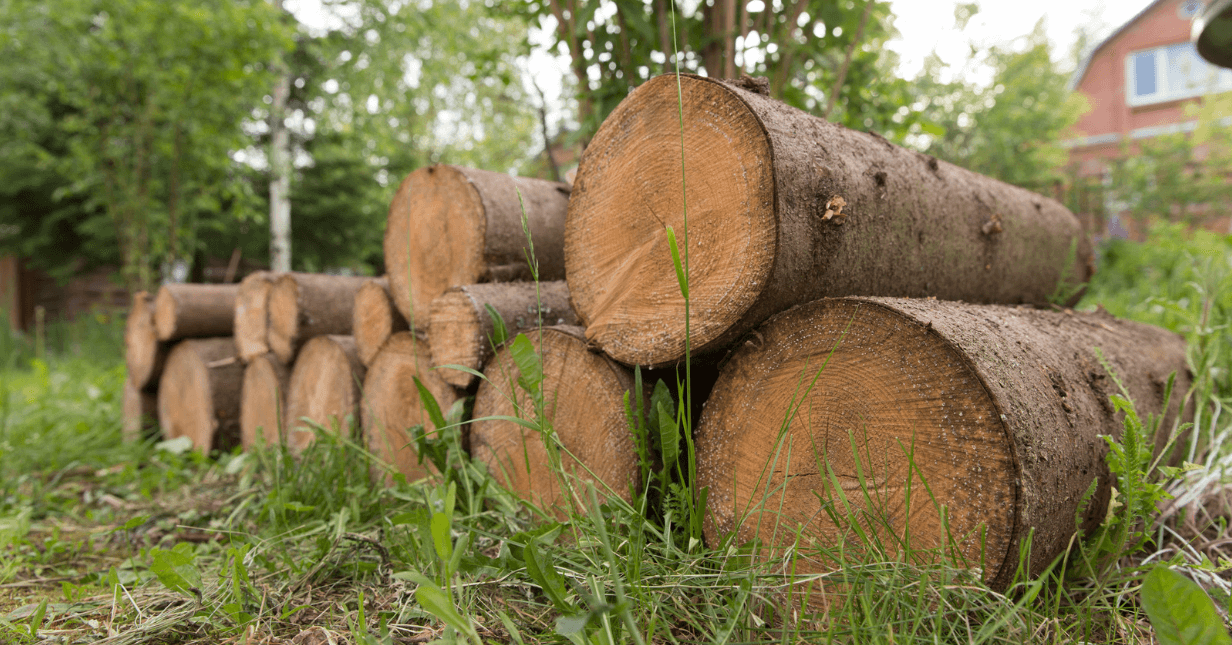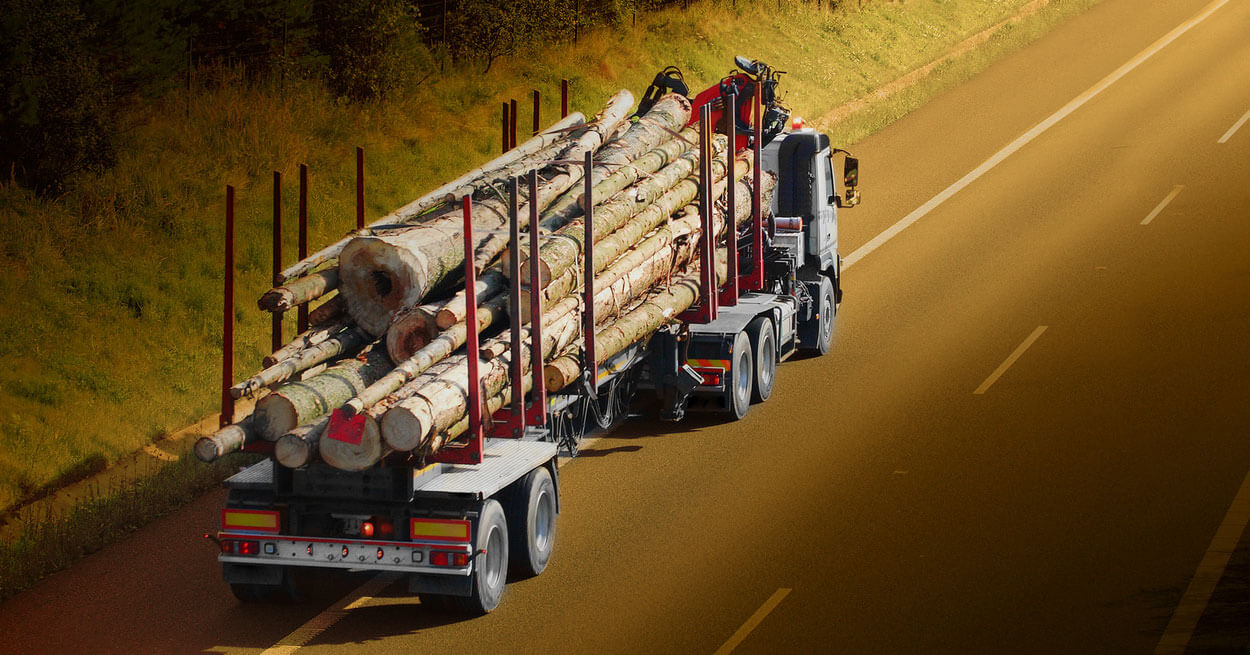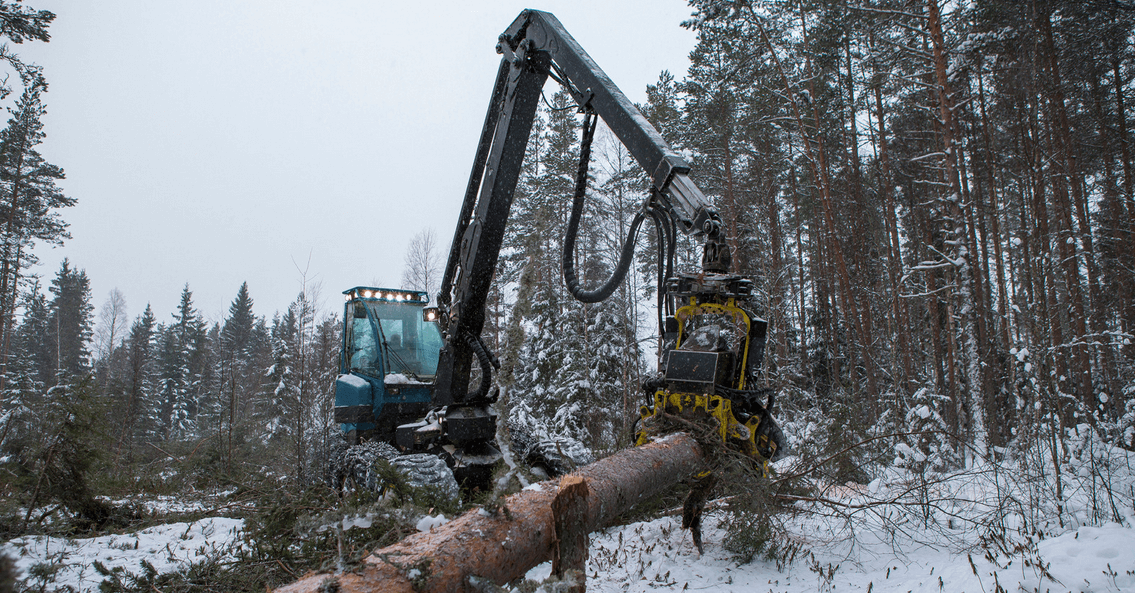Precision and expertise are of utmost importance in the forestry world. Private wood services specialize in meticulously managing and harvesting timber on private lands. These services are essential for efficient and sustainable forest operations, from bunching to skidding, delimbing to hauling. Whether you’re a landowner looking to maximize your property’s value, a timber industry professional, or just seeking insights, this comprehensive guide provides an overview of the processes and best practices that shape modern forestry.
What are Private Wood Services?
Private wood services encompass a variety of specialized offerings provided by private companies and contractors in the forestry industry. These services encompass bunching, skidding, delimbing, and hauling.
- Bunching involves efficiently gathering trees into groups, known as “bunches,” to facilitate harvesting. This task is accomplished using equipment such as feller-bunchers or chainsaws.
- Skidding entails moving the harvested trees from the cutting site to a centralized location for further processing. Skidders or cable systems are commonly employed for this purpose.
- Delimbing refers to the meticulous removal of branches from the felled trees. This can be accomplished manually, using hand tools like axes or mechanized processors.
- Hauling comes into play once the trees have been processed and prepared for transportation. They must be transported from the cutting site to a designated destination, typically a mill. Trucks equipped with trailers are the go-to choice for hauling operations.
Private wood services are crucial in ensuring efficient and safe timber harvesting processes. By contributing to sustainable forest management practices, these specialized services pave the way for a more sustainable future. In the subsequent sections, we will delve deeper into these distinctive services.
Bunching: The Art of Collecting Timber for Efficient Harvesting
Bunching is done by gathering and organizing timber before harvesting. This process is vital for ensuring efficient logging operations while minimizing damage to the surrounding environment.
During the bunching process, skilled operators utilize specialized machinery like skidders or feller-bunchers to gather trees and form well-organized groups known as “bunches.” These bunches are strategically positioned in easily accessible locations, facilitating their retrieval during harvesting. By carefully placing the timber, valuable resources can be maximized, and unnecessary movement and transportation costs can be minimized.
Successful bunching requires careful consideration of various factors, including terrain, tree species, size, and market requirements. Skilled operators consider all these variables when selecting which trees to include in each bunch, ensuring that only the most suitable logs are collected together. This method enhances operational efficiency and promotes sustainable forestry practices by reducing waste and minimizing environmental impact.
Skidding: The Essential Process of Moving Logs from Forest to Roadside
Skidding is a crucial aspect of the logging process as it enables the smooth movement of logs from the forest to the roadside. This operation involves using specialized equipment to drag or pull cut trees, such as skidders or forwarders. Skidders are equipped with grapples and winches, while forwarders feature cranes and bunk systems, ensuring the efficient transportation of logs. The logging industry achieves effective and seamless log transportation by employing these techniques.
- Methods: Two commonly employed methods for skidding are full-tree skidding and tree-length skidding. Full-tree skidding involves dragging entire trees with their branches still attached, while tree-length skidding only involves moving the main stem.
- Considerations: It is crucial to consider various factors thoroughly when undertaking skid jobs. These factors encompass the slope inclination, soil conditions, weather conditions (mainly rainfall), and the proximity to water sources.
- Efficiency: Skid operators depend on their expertise and abilities to safely and efficiently maneuver through demanding terrains. Skillfully executed skids enhance volume recovery by minimizing breakage during transportation, maximizing overall efficiency.
In essence, efficient transportation of trees from forest areas to public roadways relies on effective logging processes such as bunching, delimbing, and hauling. Each step demands specialized machinery and attention to detail. By comprehending these distinct components, timber operations can significantly enhance productivity.
Delimbing: Streamlining the Removal of Branches from Harvested Trees
Once trees have been harvested, delimbing becomes necessary to prepare them for transportation by removing the branches. This crucial step ensures the trees can be handled and transported more easily. Through the delimbing process, Private Wood Services enhances efficiency by streamlining the removal of branches.
The Importance of Delimbing
Delimbing maximizes productivity and minimizes costs during timber operations. Removing tree branches decreases the weight and volume of logs, making them easier to handle during subsequent processing and transportation. Efficient delimbing techniques enable these services to achieve faster operational speed while prioritizing safety.
Streamlined Delimbing Techniques
Private wood logging services leverage innovative technologies and advanced machinery to streamline delimbing processes efficiently. The branches are swiftly and precisely removed at high speeds using tree processors or stroke mechanisms, ensuring productivity and worker safety. These cutting-edge machines skillfully strip away tree limbs, preparing pristine logs for transportation without compromising quality standards.
By utilizing state-of-the-art equipment like feller bunchers or harvesters, private logging services guarantee swift branch removal, optimizing production rates and enhancing project timelines. This approach significantly reduces costs associated with labour-intensive methods, making it an excellent choice for efficient and cost-effective operations.
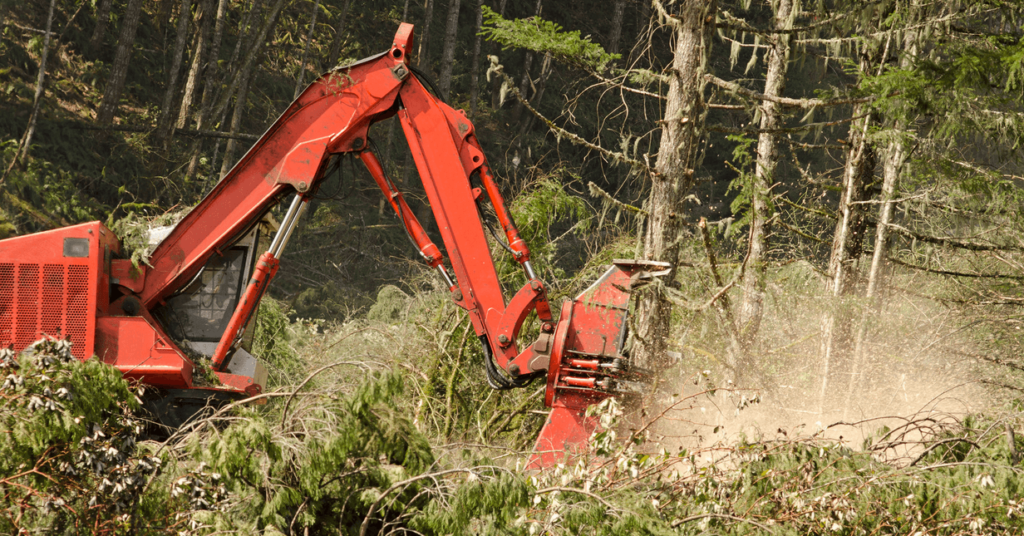
Hauling: Transporting Timber Safely and Cost-Effectively
Importance of Proper Hauling Techniques
Hauling timber is another essential service in the private wood process. It involves transporting cut lumber from the logging site to its final destination, such as mills or processing facilities. However, improper hauling can damage the timber or surrounding environment, resulting in financial losses for both loggers and buyers.
Safe and Efficient Hauling Practices
It is crucial to follow proper techniques to ensure safe and cost-effective hauling:
- Loading: The loading process should be done carefully to prevent any mishaps during transportation.
- Securing: Timely securing the load using straps or chains minimizes the risk of logs falling off or shifting during transit.
- Weight Distribution: Properly distributing weight across the truck bed helps maintain road stability.
- Route Planning: Choosing appropriate routes accommodating large trucks will avoid unnecessary delays caused by obstacles like low bridges or narrow passages.
By adhering to these practices, private wood services providers can protect their investment and promote environmentally responsible logging operations throughout the industry.
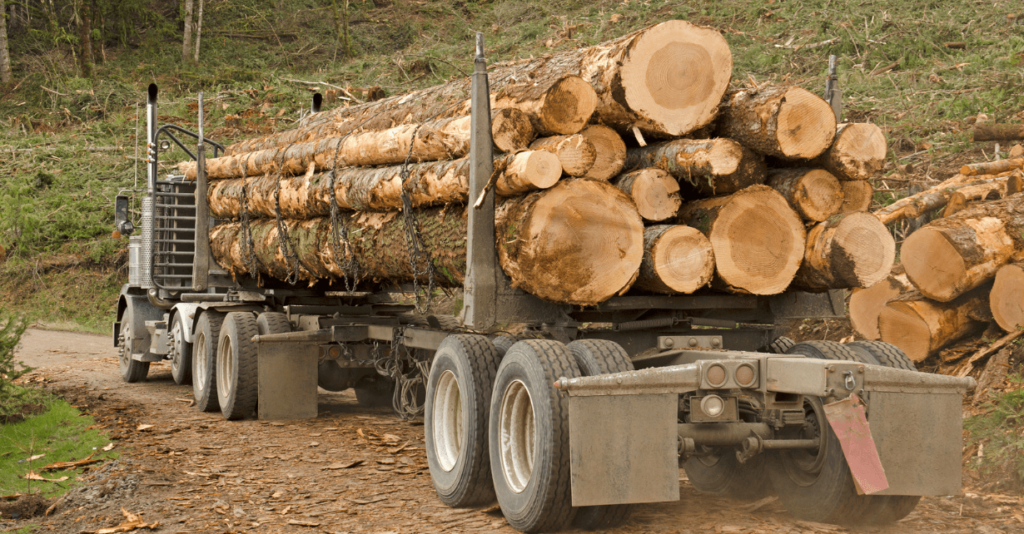
Maximizing the Value of Your Wooded Property through Private Wood Services
Transforming your wooded property into a valuable asset requires professional assistance. These experts specialize in various processes explained in the previous sections. By leveraging their skills and equipment, you can effectively manage the timber on your property to maximize its value.
Expert processes include the strategic gathering of trees into specific areas for a seamless workflow, the careful transportation of harvested trees from their original location to a more accessible site for further operations, and the meticulous removal of branches from tree trunks.
Transportation of harvested logs to mills or other destinations for further processing or sale is also essential. With the help of these specialized services, you can boost your operations’ efficiency while increasing profitability by extracting maximum value from each harvested log from your land. Professional wood services can transform your wooded property into a valuable, income-generating asset.
Tap into the true potential of your wooded property and use experts who excel in the intricate processes of effectively managing timber resources and maintaining your land, which can significantly influence your property’s value.
Choosing the Right Private Wood Services Provider for Your Needs
Finding the right provider is crucial for a successful project regarding private wood services. Here are some key factors to remember when selecting a service provider:
- Experience: Choosing a provider with extensive industry experience is vital. They should possess expertise in all aspects of private wood services, including bunching, skidding, delimbing, and hauling. An experienced provider can effectively handle any challenges during your project.
- Equipment: Ensure the chosen provider can access modern, well-maintained equipment. This is essential for completing the job efficiently and safely. Whether you require specialized machinery or standard logging equipment, it is important that your provider can meet your specific requirements.
- Reputation: Take the time to research different providers before making a decision. Read reviews and testimonials from previous clients to gauge their reputation in the industry. A reputable provider will have positive feedback and be recognized for delivering high-quality results.
Considering these factors when selecting a private wood services provider, you can rest assured that your project will be in capable hands from start to finish.
The role of technology in optimizing private wood operations
Technology is vital in improving and streamlining processes in the logging industry. With cutting-edge tools and equipment, logging companies can maximize efficiency and productivity while reducing costs and minimizing their environmental footprint.
Increased accuracy and precision
With modern technologies like GPS systems, loggers can now pinpoint tree locations with unmatched accuracy for harvesting purposes. This eliminates the need for guesswork and ensures that only designated areas are targeted, thereby minimizing damage to surrounding vegetation. Furthermore, integrating automated machinery equipped with advanced sensors enables precise measurement of tree dimensions, facilitating more accurate volume and weight estimations during transportation planning. These advancements enhance operational efficiency and contribute to sustainable forestry practices.
Improved safety measures
Safety is paramount in every industry, particularly in high-risk environments like logging. The advent of technology has revolutionized safety measures by introducing remote-controlled machines capable of operating in hazardous locations or performing intricate tasks, eliminating the risk to human lives. Moreover, real-time monitoring systems enable supervisors to closely monitor worker activities on-site, promptly identifying potential hazards or incidents before they escalate into accidents. Through these advancements, industries can prioritize the well-being of their workforce while optimizing efficiency and productivity.
Streamlined logistics
Efficient transportation logistics play a vital role in the private wood industry. With the advent of advanced software programs, real-time tracking of vehicles carrying harvested logs from forest sites to processing facilities is now possible. This enables the optimization of routes based on traffic conditions and weather patterns, resulting in reduced travel time and fuel consumption. As a result, overall operational costs are lowered.
By embracing technological advancements, logging services demonstrate their commitment to sustainability through increased efficiency, improved safety practices, and streamlined logistical processes.
Common challenges and solutions in private wood and logging services
Private wood services present their fair share of challenges. Here are some common hurdles faced by professionals in this industry, along with practical solutions:
- Limited accessibility: One major challenge is reaching remote or rugged terrains where trees must be harvested. This can hinder efficiency and increase costs. The answer lies in utilizing specialized equipment, such as low-impact skidders and track machines that can easily maneuver through challenging landscapes.
- Safety concerns: Working with heavy machinery and sharp tools risks workers’ safety on the job site. To mitigate these hazards, providing comprehensive training sessions, enforcing strict safety protocols, and ensuring all workers have proper protective gear is crucial.
- Logistical complexities: Coordinating multiple tasks such as bunching, skidding, delimbing, and hauling requires careful planning to maintain a smooth workflow and productivity. Implementing a well-defined schedule and utilizing advanced technologies like GPS tracking systems can streamline logistics processes.
- Environmental sustainability: To minimize environmental impact, private logging services must prioritize responsible forestry practices. Adopting sustainable harvesting methods like selective cutting instead of clear-cutting helps preserve ecosystems while ensuring future forest regeneration.
By proactively addressing these challenges, private wood service providers can optimize operations, improve worker safety, enhance productivity, and contribute to maintaining sustainable forests for generations to come.
Innovations in Private Wood Services
Logging services have witnessed notable advancements in technology and techniques in recent years.
- Technological breakthroughs: The rise of drones has brought about a paradigm shift in the functioning of private timber services. These uncrewed aerial vehicles are now employed for many tasks, such as evaluating forest regions, pinpointing suitable timber for harvesting, and monitoring logging operations. Additionally, GPS systems are extensively utilized to ensure accurate navigation through dense woodlands, thereby augmenting efficiency and minimizing environmental consequences.
- Mechanical progress: Modern machinery is indispensable in private wood services. State-of-the-art equipment, like feller bunchers, allows loggers to fall multiple trees simultaneously efficiently. Skidders with specialized grapples can effortlessly transport logs across even the most challenging terrains while preserving the surrounding environment and soil. These machines enhance productivity, reduce labour costs, and minimize ecological disruption.
- Sustainable practices: As the importance of environmental preservation grows, private logging service providers are becoming more dedicated to sustainable forestry practices. They employ selective logging techniques, which involve removing trees instead of clear-cutting entire areas. By implementing these practices, they can ensure the health of forest ecosystems while still meeting their production goals.
These innovations and approaches contribute to a private wood services industry that is more efficient and environmentally conscious than ever before.
Conclusion
Private wood services have made significant progress by blending traditional practices with modern innovations, elevating the timber industry to new heights. Every step is vital in ensuring optimal efficiency and sustainability, from the meticulous bunching process to the strategic maneuvers of skidding, delimbing, and final transportation via hauling. The industry’s technological advancements, including drones and GPS, and its dedication to sustainable forestry practices demonstrate a commitment to environmental stewardship and operational excellence.
Private wood and logging services are a testament to the delicate balance between harnessing natural resources and preserving nature’s magnificence while enhancing and maximizing the value of private properties for landowners. These services maintain the property and ensure its optimal appearance and increased value.
Choose San Forestry for quality results that not only uphold the integrity of your timber but also preserve and enhance your valuable property. Don’t settle for anything less than excellence.
Contact us today to learn more about our comprehensive services and how we can help your private property thrive and optimize your operations.

